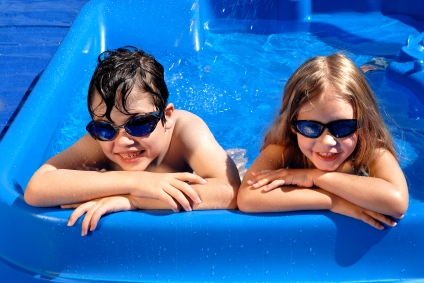 More 350 infants and toddlers drown in swimming pools each year nationwide, the majority in the summer months of June, July and August; most in backyard pools. Here are some swimming pool safety tips from the Consumer Product Safety Commission (CPSC).:
More 350 infants and toddlers drown in swimming pools each year nationwide, the majority in the summer months of June, July and August; most in backyard pools. Here are some swimming pool safety tips from the Consumer Product Safety Commission (CPSC).:
- Never leave a child unsupervised near a pool;
- Instruct babysitters about potential hazards to young children in and around swimming pools and the need for constant supervision
- Completely fence the pool. Install self-closing and self-latching gates. Position latches out of reach of young children. Keep all doors and windows leading to the pool area secure to prevent small children from getting to the pool. Effective barriers and locks are necessary preventive measures, but there is no substitute for supervision.
- Do not consider young children "drown proof" because they have had swimming lessons; young children should always be watched carefully while swimming. (For the American Academy of Pediatrics' revised policy statement on early swimming lessons, click here).
- Do not use flotation devices as a substitute for supervision.
- Never use a pool with its pool cover partially in place, since children may become entrapped under it. Remove the cover completely.
- Place tables and chairs well away from the pool fence to prevent children from climbing into the pool area.
- Keep toys away from the pool area because a young child playing with the toys could accidentally fall in the water.
- Remove steps to above ground pools when not in use.
- Have a telephone at poolside to avoid having to leave children unattended in or near the pool to answer a telephone elsewhere. Keep emergency numbers at the poolside telephone.
- Learn CPR (cardiopulmonary resuscitation).
- Keep rescue equipment by the pool.
Second leading cause of death
According to the Consumer Product Safety Commission (CPSC):
- 350 children under the age of five drown in pools each year nationwide
- The majority of the deaths occur in June, July and August; most in backyard pools.
- Among unintentional injuries, drowning is the second leading cause of death to this age group after motor vehicle accidents. In some states such as California, Florida and Arizona, drowning is the leading cause of accidental death to children under five.
- While drowning rates have fallen steadily from 2.68 per 100,000 in 1985 to 1.32 per 100,000 in 2006, drowning continues to be the second leading cause of death for children ages 1 to 19, claiming the lives of roughly 1,100 children in 2006. Toddlers and teenaged boys are at greatest risk.
- Another 2,600 children are treated in hospital emergency rooms each year for near-drowning incidents. Some of these submersion accidents result in permanent brain damage.
CPSC requests that consumers report incidents of drowning or "near drowning" by calling the Commission toll-free at 1-800638-2772.








